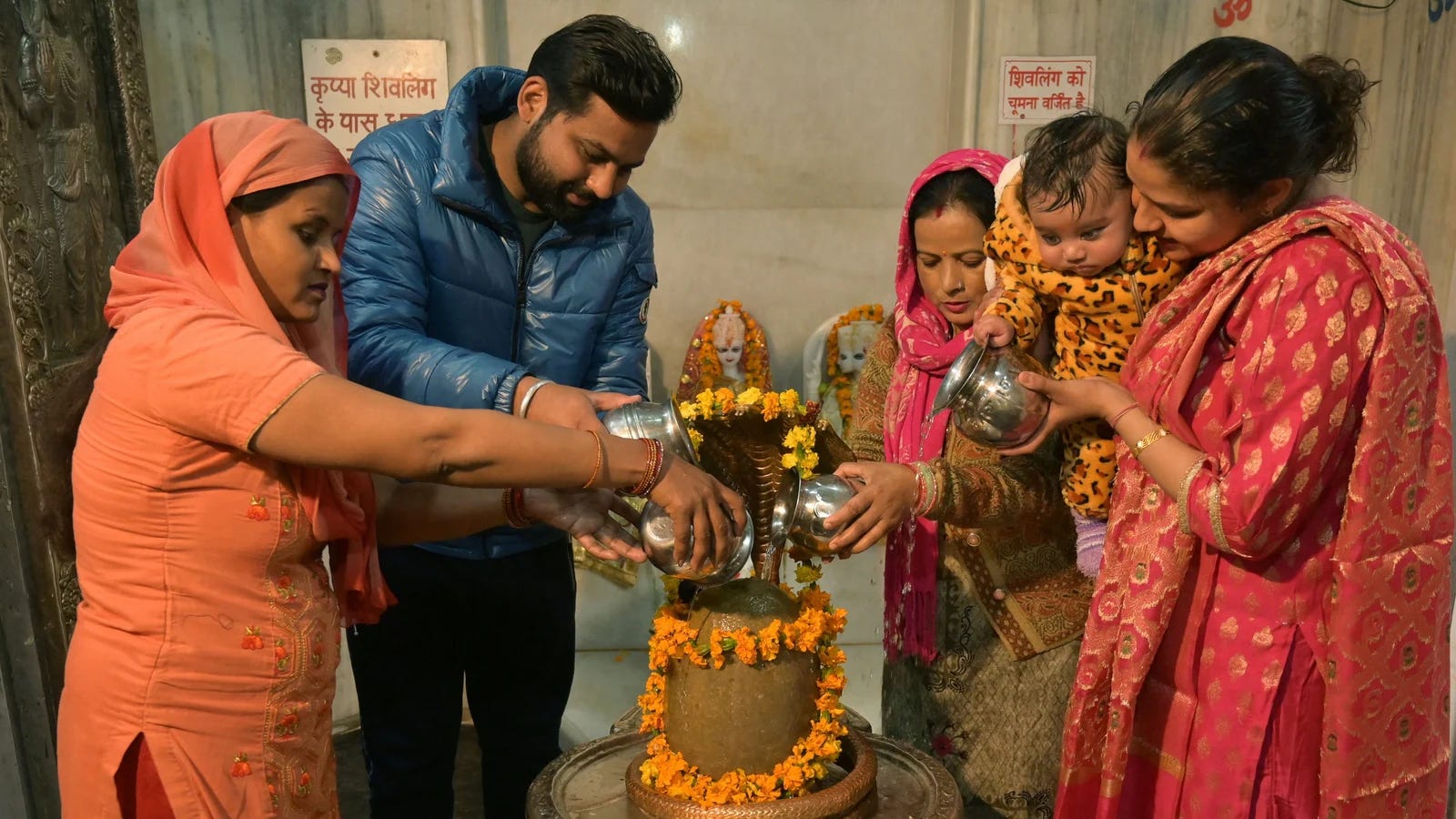
In a heartwarming display of communal harmony, a Shiva temple in Muzaffarnagar’s Ludhawala area reopened its doors after remaining closed for 32 years. The reopening of the temple, which had been shut since the 1992 communal tensions following the Babri Masjid demolition, was marked by a 'havan' ceremony on Monday. Local Muslim residents participated in the celebration by showering flowers on the Hindu devotees' procession, highlighting a powerful message of unity and peace.
A Temple Frozen in Time
The temple, originally built in 1971, stood as a symbol of shared cultural space until the unfortunate events of 1992. Following the demolition of the Babri Masjid in Ayodhya, communal violence and unrest swept across several regions, including Muzaffarnagar. Hindu families residing in Ludhawala fled the area amid the tensions, taking with them the idols and 'shivling' from the temple to prevent desecration. Since then, the temple’s doors had remained shut, a silent witness to the tumultuous past.
The decision to reopen the temple comes as a significant step towards reconciliation. For years, the temple lay abandoned, its premises gradually merging with the bustling neighborhood. However, efforts from local leaders and spiritual heads, including Swami Yashvir Maharaj, have played a crucial role in initiating the reopening process.
Swami Yashvir Maharaj, who spearheaded the reopening, had earlier announced that the temple would undergo a purification ceremony before resuming religious activities. On December 23, the temple officially reopened following the completion of 'havan' and other rituals.
Muslim Community’s Heartfelt Gesture
The highlight of the event was the participation of local Muslims, who not only welcomed the reopening but actively engaged in the festivities. As the Hindu procession passed through the area, Muslims gathered to shower petals and extend their best wishes to devotees.
City Magistrate Vikas Kashyap lauded the peaceful conduct of the ceremony, emphasizing that no disturbances were reported. “All functions were held without any disruption. The atmosphere remained calm and harmonious, reflecting the shared desire for peace,” he said.
Swami Yashvir expressed his gratitude to the community for their support and underlined the significance of the moment. “This is not just the reopening of a temple, but a revival of trust and brotherhood that transcends religious boundaries,” he remarked.
The local administration had put extensive security measures in place to ensure a smooth reopening. Police patrols were conducted throughout the day to maintain order, but the overwhelming spirit of cooperation from the community ensured that no issues arose.
Parallel Developments in Sambhal – Ancient Stepwell Discovered
In a related development about 200 kilometers away in Sambhal, archaeologists uncovered an ancient stepwell near the Bhasma Shankar Temple. The temple, which itself had remained closed for over 46 years, reopened earlier this month following restoration efforts by the Archaeological Survey of India (ASI).
The discovery of the 400-square-meter stepwell, locally known as a ‘baoli,’ has generated significant interest among historians and residents. Sambhal District Magistrate Rajendra Pensiya confirmed the excavation, stating that the find could shed light on the region’s architectural heritage.
“The ASI team unearthed a large stepwell that had been buried for decades. The structure is believed to be several centuries old, and its restoration could add to Sambhal’s cultural landmarks,” Pensiya explained.
The ASI’s survey extended beyond the stepwell, covering 24 sites in the area, including the historic Kalki Vishnu temple. Pensiya noted that the survey involved detailed inspections of five shrines and 19 wells, lasting over eight hours. "The ASI will compile its findings into a comprehensive report, which will help guide further restoration efforts," he added.
Symbolic Significance
The reopening of both the Muzaffarnagar Shiva temple and the Sambhal temple is being seen as part of a broader movement to revive religious and historical sites that had been sidelined by past conflicts or neglect.
In Muzaffarnagar, the temple's reopening carries a deeper symbolic meaning, particularly in fostering communal goodwill in an area known for its diverse population. Local leaders believe that such gestures of unity can play a critical role in healing old wounds and building a more cohesive society.
For many in Ludhawala, the reopening serves as a reminder that despite differences, communities can come together to celebrate shared heritage and traditions.
As one local resident aptly put it, “The temple may have been closed for years, but our bonds with neighbors never weakened. This event proves that love and respect ultimately triumph over fear and division.”
In a related development, 200 km away in Sambhal, the Archaeological Survey of India (ASI) unearthed an ancient stepwell near the Bhasma Shankar Temple, which had reopened after 46 years. Sambhal District Magistrate Rajendra Pensiya confirmed the discovery of the 400-square-meter stepwell, adding that further surveys covered 24 historical sites.
The reopening of temples and archaeological findings signals renewed efforts to preserve cultural heritage across Uttar Pradesh.
Inputs from Hindustan Times and PTI.

